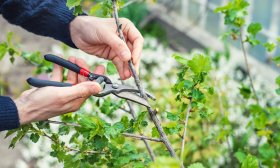Using Beneficial Nematodes and Other Solutions to Combat Soil Gnats
Gnats in the soil can be a frustrating problem for indoor and outdoor gardeners alike. These tiny insects not only annoy with their persistent flying but can also damage your plants by feeding on roots. Luckily, there are effective and natural ways to manage soil gnats, including the use of beneficial nematodes and other practical solutions.
Understanding Soil Gnats: Identification and Impact
Soil gnats, often referred to as fungus gnats, are small flying insects that thrive in moist soil environments. Their larvae feed on fungi and organic matter in the soil but can sometimes damage plant roots, especially in young or sensitive plants. Recognizing a gnat infestation early is crucial for effective management. Signs include tiny flies buzzing around potted plants or damp soil surfaces, as well as wilting or stunted plant growth due to root damage.
Introducing Beneficial Nematodes: Nature’s Pest Control
Beneficial nematodes are microscopic roundworms that act as natural predators against various pest larvae, including those of fungus gnats. When applied to the soil, these nematodes seek out gnat larvae and infect them with bacteria that kill the pests without harming your plants or beneficial organisms. This method is safe for indoor use and environmentally friendly, making it an excellent choice for gardeners seeking organic pest control options.
How to Apply Beneficial Nematodes Effectively
To use beneficial nematodes effectively against soil gnats, start by purchasing a reputable product specifically formulated for pest control. Dilute the nematode solution according to package instructions and apply evenly over moist soil where gnats have been spotted. Maintaining moist conditions after application helps ensure nematode survival and activity. Repeat treatments may be necessary every one to two weeks until the infestation diminishes.
Additional Solutions: Cultural Practices and Natural Remedies
Beyond beneficial nematodes, several cultural practices can help reduce gnat populations. Avoid overwatering your plants since damp soils attract gnats; instead allow the top inch of soil to dry between waterings. You can also place yellow sticky traps near affected plants to catch adult gnats before they lay eggs. Natural remedies like applying a thin layer of sand or diatomaceous earth on soil surfaces create barriers that deter egg-laying females.
Preventing Future Infestations: Maintenance Tips
Prevention is key when it comes to managing soil gnats long-term. Regularly inspect houseplants for signs of pests, maintain proper watering schedules tailored to each plant’s needs, and keep planting areas clean by removing decaying leaves or debris which serve as breeding grounds for fungus gnats. Using sterile potting mixes when repotting can also minimize introducing new infestations.
Dealing with soil gnats doesn’t have to be stressful when you know how. Combining beneficial nematodes with good gardening habits offers a powerful way to protect your plants naturally from these pesky invaders while supporting a healthy growing environment.
This text was generated using a large language model, and select text has been reviewed and moderated for purposes such as readability.











